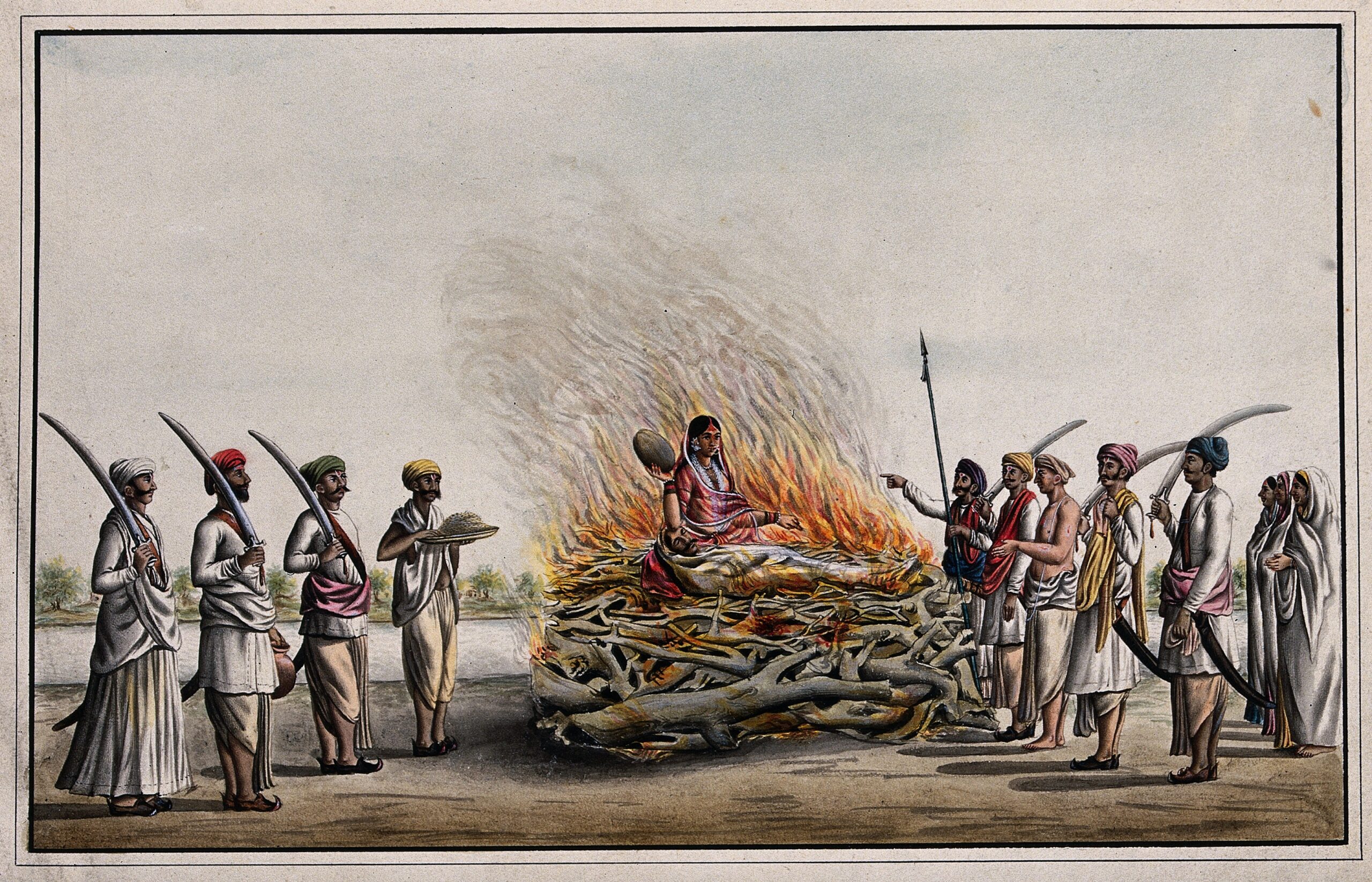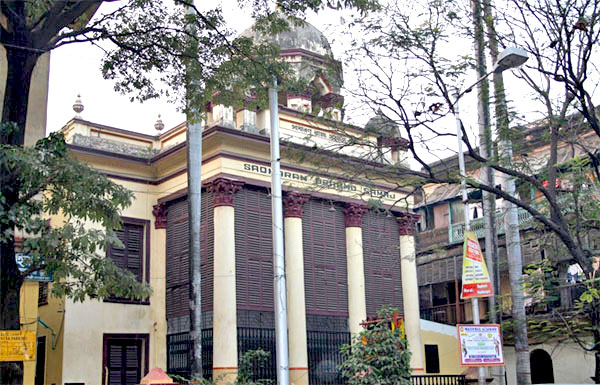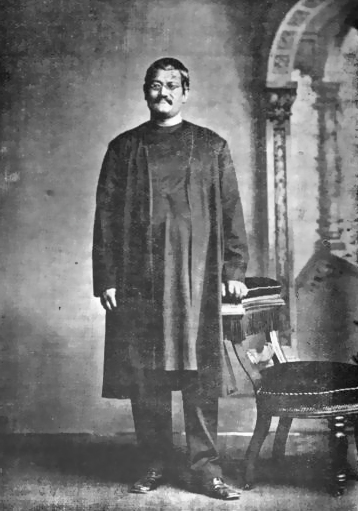The formation of Brahmo Samaj marked the onset of a reformist struggle in India. The movement for a new awakening in India was accompanied by the formation of several reformist initiatives. With the advent of the Western education system, a new section of Indians began to re-examine the then existing social beliefs and practices. Ram Mohan Roy was one such pioneering reformer. His interest in Western education and journalism left a significant impact not only in Bengal but also in the entire country.
His social relevance and administrative expertise earned him recognition from the then Mughal emperor who accorded him the title of Raja. The Royal patronage of the Mughals allowed Roy to travel to England. Roy’s commitment towards social reformation gained momentum in 1815 when he founded Atmiya Sabha. Later, he rechristened another significant association called the Brahmo Samaj in 1828.
The formation of Brahmo Samaj marked the onset of a reformist struggle in India. It began to call for re-examining Hindu religious and customary practices. The growing call for social reformation had a direct impact on Hinduism and its prolonged social orthodoxies. Brahmo Samaj marked a movement for renaissance all over India.
The Main Ethos of Brahmo Samaj
The first two decades of the 19th century were a phase of social turmoil as the structure and hierarchy of the social system in India was questioned, perhaps for the first time. The actual spirit of modernity in India was not apparent until the rise of reformers. Brahmo Samaj was co-founded by Ram Mohan Roy and Debendranath Tagore. It grew into a mass social and religious movement in India. It emphasized religious, educational, and social reform.
It took up the cause of reforming Hindu religious and customary evils. It was to abolish Sati and the caste system-induced untouchability in India. Brahmo Samaj advocated for rethinking Hindu practices. The main perspective of Brahmo Samaj was to re-envision the meaning of God, religious scriptures, liberation, and superstition. Brahmo Samaj advocated for the existence of unity and a singular God. Brahmo Samaj believes in the existence of an ‘infinite singularity’. It re-examined several existing premises of the Hindu religion. It questioned the notion of Avatars, reincarnation, or rebirth. Rejection of rebirth resulted in the scientific explanation of worldly affairs and their relations with the conception of God.
Brahmo Samaj denounced idol worshipping and allegiance to many gods. Rejection of polytheism promoted a boundless, and omnipresent imperceivable idea of God. Such a concept of God was to ensure love for all the creatures for it all belonged to a singular Brahman. Brahman means the ultimate consciousness and universal spirit.
According to Ram Mohan Roy, it was the Brahman that was to be adored and worshipped for it symbolized the whole universe. Followers of the Samaj were known as Brahmo Samajists. The followers were more radical as they did not follow religious scriptures and saints. They also rejected the institutionalization of mediators between Brahman and the human self. They also stood against the doctrines of Karma. Liberation – Moksha – has been integral to the religious philosophy of the Hindu religion.The founders of Brahmo Samaj believed in the idea of the soul. To them, the soul was immortal as it could merge into the Brahman. It would not be incorrect to say that there was no connection between the founders and followers of Brahmo Samaj as both did not subscribe to the philosophy of Mukti – salvation, for there was no reason to believe in hell and heaven. Brahmo Samaj was significant not only for advocating reasoned religious practice but also advocated for saving the Indian social belief system from its beliefs in after life world.
One of the major contributions of Brahmo Samaj was its influence on the youths to embrace rationalism, search for knowledge, and freedom of human selves. India’s first step towards secular ideas was laid down by Samaj’s commitment to downplay the system of religious orthodoxies. Ram Mohan Roy, though a Brahmin, opposed sectarianism and coercive religious norms.
Sati Pratha

According to Brahmo Samaj, the Sati system, disallowing widow remarriage, and child marriage in the Indian social system were the product of superstitious values that was embedded in Indian customs. An interesting aspect of the Brahmo Samaj movement was the attempt to communicate to all the religious denominations in India to come out of bigotry, polygamy, casteism, and racism. The growing prominence of the movement directly or indirectly impressed the first-generation Muslim reformers in India.
The heinous Sati system was the first target of Brahmo Samajists. Roy’s attempt to instill modern values in India was possible as he was able to expose the ill effects of social hierarchy as it was the main cause of inequality amongst humans.
The Rise and Fall of Brahmo Samaj
After Roy’s demise in 1833, there was a gradual decline in the membership of Brahmo Samaj. A severe blow was given by the Telegu Brahmins who began to promote idol worshipping. It was during this decline, Debendranath Tagore came up with another group called ‘Tattwabodhini Sabha’, in October 1839. It pursued a new philosophy called ‘Adi Dharm.’ It declared to pursue the concept of ‘Adi Dharm’ as an ‘uncorrupted faith’ while it aimed at separating itself from several other faith that mushroomed in Calcutta.
Throughout the middle of the 19th century, the legacy of Brahmo Samaj was eventfully marked by rising and falling. In 1866, the Brahmo Samaj witnessed a split within. A new section of Brahmo activists who considered themselves more radical viewed the need for more determined actions to reform Indian social systems. In addition to the need for freedom from caste oppression, it also debunked the coercions of ancient scriptures.
They were more adamant about inter-caste marriage, abolition of the purdah system, and caste division of Indian society. They practiced their ideas as they began to openly break the caste-induced untouchability. They were open now taking food from the lower castes while they viewed education as the sole basis of reforming India’s social ills. The impact of the split was widely seen in the lives of every community that was largely facing oppressive social norms.
Brahmo Samaj had witnessed two important streams of followers in the later years. It was categorized into Adi Brahmo Samaj and Sadharan Brahmo Samaj. The former was dominated by the reformers who did not take a counter position to the British rule in India. However, it attempted to bring up all humans – colonial and colonized – at a similar plank. Roy’s main idea was to forge a new India that was rational and secular.
Adi Brahmo Samajists were dominated by Roy himself and supported by Prasanna Coomar Tagore and Debendranath Tagore. Being the earlier reformers, their main target was to question several Brahminical practices like priesthood and associate social evils.

On the other hand, Sadharan Brahmo Samaj was a section of reformers who differed from the pioneering reformers. They emerged in 1878 in Calcutta. Umesh Chandra Dutta, Shibachandra Deb, and Ananda Mohan Bose were the main leaders who rose in rebel against some fundamental premises of the Brahmo Samaj. There was a liberal upsurge. It advocated for worshipping the One True God. It stood for allowing access to religious places without distinction of caste, gender, and class.
Sadharan Brahmo movement was more liberal and cosmopolitan in its views and works. The main objective of the Sadharan Samajists was to escape the materialist conception of religion.
The impact on Society
The Brahmo Samaj had left an unquestionable reformist legacy. It stood for reformation first as it viewed political freedom as detrimental to the former. Roy stood out as the unquestionable father of modern India. The gradual decline in the practice of social orthodoxies in India was the result of Brahmo Samaj’s bold advocacy for religious reform and upliftment of women’s status in social relations. The voice of Brahmo Samaj was not only confined to the Hindus, but it had also positively influenced all the religious systems. Though limited, it had acquired tremendous transformation in social beliefs while it hastened modern legal interference on social and customary affairs in India.

Brahmo Samajists, at several phases, showed their tilt to Christian values. For example, in 1866 Keshub Chandra openly endorsed Christian values as integral to Brahmo Samaj’s philosophies. The downplaying of the caste system and demand for women’s education were some of the distinct contributions of the Samaj. The passing of the ‘Special Marriages Act of 1872’ with a provision for a minimum age limit for girls was another achievement.
The imprints of the Samaj’s legacies were found in the works of revivalists who were generally opposed to reformists’ appropriation of Western religious values. Revivalists like Isworchandra Vidyasagar and Swami Vivekananda also advocated for women’s education, banning child marriage and widow remarriage.

